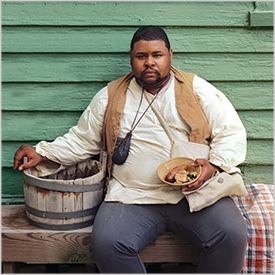Smithsonian Associates Presents August Program Highlights
The August issue of the Smithsonian Associates’ program guide features a variety of educational and cultural programs, including seminars, lectures, studio arts classes, performances for adults and children and local and regional study tours. Highlights this month include:
Frank Lloyd Wright’s Urban Vision: New York City Overnight Tour
Friday, Aug. 4; 8:30 a.m. to Saturday, Aug. 5; 10 p.m.
Tour departs by bus from the Mayflower Hotel, Connecticut Ave. and DeSales St., N.W.
Participants mark the 150th anniversary of the birth of Frank Lloyd Wright with a unique overnight visit to Manhattan led by urban historian Bill Keene. They will get insights into the architect’s creative relationship to the city as they explore a major exhibit at the Museum of Modern Art, experience a tour of the Guggenheim Museum and view holdings in the Wright archives at Columbia University.
The Cooking Gene: Southern Food’s Deepest Roots
Thursday, Aug. 10; 6:45 p.m.
Smithsonian’s S. Dillon Ripley Center
Traditional Southern food is an integral part of America’s national culinary heritage, yet the question of who “owns” it is linked to wider issues of race, politics and history. Culinary historian and cook Michael Twitty, a descendant of both African and European ancestors, discusses how he traced the roots of soul food, barbecue and other staples of Southern cooking—as well as those of his own family.
How Virtual Reality Is Changing Medicine
Thursday, Aug. 17; 6:45 p.m.
Smithsonian’s S. Dillon Ripley Center
Although virtual reality can seem like something out of science fiction, the possibilities are virtually limitless in its applications to medicine and health care. Susan Persky of the National Institutes of Health explores how new technologies are opening new worlds—sometimes literally—for doctors, researchers, clinicians and patients.
Plastics: Separating the Good From the Bad
Wednesday, Aug. 23; 6:45 p.m.
Smithsonian’s S. Dillon Ripley Center
People have a complicated relationship with plastics: they depend on the material’s convenience and affordability every day, but the overabundance of waste it produces harms the environment. Smithsonian scientists Odile Madden and Pierre Comizzoli discuss how their own work—in museum conservation and research biology, respectively—approaches plastics’ potential and its problems.
# # #
SI-414-2017
Lauren Lyons
202-633-8614

